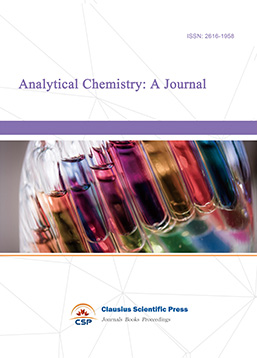Impact of Assembled Multi-Story Exterior Wall Structures on Interior Thermal Stability
DOI: 10.23977/jmpd.2024.080111 | Downloads: 21 | Views: 1215
Author(s)
Deng Xueqin 1,2, Biks Yu.S. 1
Affiliation(s)
1 Vinnytsia National Technical University, Vinnytsia, 999146, Ukrainian
2 Yunnan Technology and Business University, Kunming, 651701, China
Corresponding Author
Deng XueqinABSTRACT
In the face of the challenges posed by global climate change, the construction industry is under immense pressure to transform, with a consensus emerging on the need for more energy-efficient construction methods. Prefabricated buildings, renowned for their green, environmentally friendly, and efficient characteristics, are gradually becoming the new darling of the construction industry. The multi-storey prefabricated façade, as a crucial component of prefabricated buildings, has attracted widespread attention due to its impact on indoor thermal stability. Through systematic research on multi-storey prefabricated façade structures, a theoretical basis can be provided for improving the design of prefabricated buildings and enhancing their indoor thermal comfort. Indoor thermal stability is closely related to energy consumption and directly affects the comfort and health of occupants. In prefabricated buildings, factors such as facade structure design, material selection, and assembly methods play a critical role in influencing the stability of the indoor thermal environment. Studying the impact of multi-storey prefabricated façade structures on indoor thermal stability aims to reveal the effects of different design solutions on temperature control, guiding the future design and construction of prefabricated buildings to achieve greater energy efficiency and livability.
KEYWORDS
Assembled buildings; Multi-story facade structures; Interior thermal stability; Impact studyCITE THIS PAPER
Deng Xueqin, Biks Yu.S., Impact of Assembled Multi-Story Exterior Wall Structures on Interior Thermal Stability. Journal of Materials, Processing and Design (2024) Vol. 8: 85-96. DOI: http://dx.doi.org/10.23977/jmpd.2024.080111.
REFERENCES
[1] Sun H, Liu Q, Li Y, et al.Factors Influencing Carbon Emissions of Assembled Building Construction Enterprises [J].Journal of Sustainable Development and Green Buildings, 2023, 1(1):776-779.
[2] Pietro I O, Santo B D .Lewis Acidic Zinc(II) Complexes of Tetradentate Ligands as Building Blocks for Responsive Assembled Supramolecular Structures[J].Chemistry, 2023, 5(1):119-137.
[3] Guangchao X, Hang W, Chengji D, et al.Thermal stability and selective nitridation of Cr2AlC in nitrogen at elevated temperatures[J].Ceramics International, 2022, 48(22):33151-33159.
[4] Kateřina S, Nikola V .Assessment of the Summer Thermal Stability of the Attic Room Using Two Different Software [J].Civil and Environmental Engineering, 2020, 16(2):360-369.
[5] Caihong F, Jun Z, Ruibin J, et al.Engineering of Hollow PdPt Nanocrystals via Reduction Kinetic Control for Their Superior Electrocatalytic Performances.[J].ACS applied materials interfaces, 2018, 10(35):29543-29551.
[6] Anonymous .Terra C02 clinker-free OPUS Zero binder enters field concrete trials[J].Concrete Products, 2024, 77(4): 25-28.
[7] Weijian W, Yong F, Lijuan L, et al.Carboxy styrene-butadiene latex and PVA fiber co-modified rubber concrete - experiment and molecular dynamics simulation[J].Composite Interfaces, 2024, 31(1):99-122.
[8] Zhou Z, Huang W, Wang X .Experimental assessment and compressive constitutive model of rubberized concrete confined by steel tube [J].Progress in Rubber Plastics and Recycling Technology, 2024, 40(1):3-16.
[9] Biks Y, Ratushnyak G, Ratushnyak O, et al. Application of AHP and GRA methods in Energy Efficiency Potential's Assessment of Envelopes from Natural Materials[J]. Theory and Building Practice. Vol. 2, № 2: 48-62.
[10] Biks Y S, Ratushnyak O G. The sustainability of the best alternative when changing the criteria weights in MCDA assessment of envelopes energy efficiency potential[D]. ВНТУ, 2020.
[11] Yuriy B, Ratushnyak G, Ratushnyak O. Energy performance assessment of envelopes from organic materials[J]. Architecture, Civil Engineering, Environment, 2019, 12(3): 55-67.
[12] Gasparella A, Pernigotto G, Baratieri M, et al. Thermal dynamic transfer properties of the opaque envelope: Analytical and numerical tools for the assessment of the response to summer outdoor conditions[J]. Energy and Buildings, 2011, 43(9): 2509-2517.
| Downloads: | 4087 |
|---|---|
| Visits: | 253297 |
Sponsors, Associates, and Links
-
Forging and Forming

-
Composites and Nano Engineering

-
Metallic foams

-
Smart Structures, Materials and Systems

-
Chemistry and Physics of Polymers

-
Analytical Chemistry: A Journal

-
Modern Physical Chemistry Research

-
Inorganic Chemistry: A Journal

-
Organic Chemistry: A Journal

-
Progress in Materials Chemistry and Physics

-
Transactions on Industrial Catalysis

-
Fuels and Combustion

-
Casting, Welding and Solidification

-
Journal of Membrane Technology

-
Journal of Heat Treatment and Surface Engineering

-
Trends in Biochemical Engineering

-
Ceramic and Glass Technology

-
Transactions on Metals and Alloys

-
High Performance Structures and Materials

-
Rheology Letters

-
Plasticity Frontiers

-
Corrosion and Wear of Materials

-
Fluids, Heat and Mass Transfer

-
International Journal of Geochemistry

-
Diamond and Carbon Materials

-
Advances in Magnetism and Magnetic Materials

-
Advances in Fuel Cell

-
Journal of Biomaterials and Biomechanics


 Download as PDF
Download as PDF